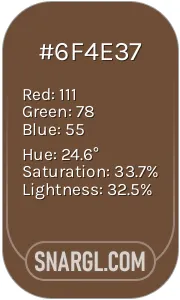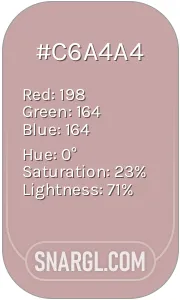
Moccasin
What color is Moccasin?
Moccasin is a color that is often used to describe a shade of brown or beige that closely resembles the color of actual moccasin shoes.
It is associated with a natural and neutral aesthetic, often used as a versatile color that complements various other colors and styles.
Moccasin has the HEX code #FAEBD7, which means it is composed of 98.04% red, 92.16% green and 84.31% blue.
In the HSL scale, Moccasin has a hue of 34.3°, 77.8% saturation and a lightness value of 91.2%.
Moccasin is a warm color, and it belongs to the yellow color family.
Example of the palette with the Moccasin color

See these colors in NCS, PANTONE, RAL palettes...
Example of the palette with the Moccasin color

See these colors in NCS, PANTONE, RAL palettes...
Example of the palette with the Moccasin color

See these colors in NCS, PANTONE, RAL palettes...
What are the examples of Moccasin color in everyday life?
Example of the palette with the Moccasin color

See these colors in NCS, PANTONE, RAL palettes...
What looks best in Moccasin?
It is a warm and cozy color that can create a welcoming and comfortable atmosphere.
Moccasin can look best with colors that complement or contrast its warmth and brightness.
Here are some suggestions for what looks best in moccasin:
For a natural and earthy look, you can pair moccasin with other shades of brown, beige, tan, or cream.
These colors can create a harmonious and soothing effect, especially for furniture, walls, or floors.
You can also add some green accents to bring some freshness and vitality to the space.
For example, you can have a moccasin sofa with some green pillows, a beige rug, and a brown coffee table.
You can also paint your walls in moccasin and add some green plants or artwork to liven up the room.For a more vibrant and cheerful look, you can pair moccasin with colors that are opposite to it on the color wheel, such as blue, purple, or pink.
These colors can create a striking and dynamic contrast, especially for accessories, clothing, or art.
You can also use some white or black elements to balance out the colors and add some elegance and sophistication.
For example, you can wear a moccasin dress with a blue scarf, a purple bag, and some black shoes.
You can also hang a moccasin painting with some blue, purple, or pink details on a white wall.For a more subtle and refined look, you can pair moccasin with colors that are similar to it in hue, such as orange, yellow, or gold.
These colors can create a warm and glowing effect, especially for lighting, jewelry, or candles.
You can also use some gray or silver elements to add some contrast and coolness to the space.
For example, you can have a moccasin lamp with an orange shade, a yellow candle, and some gold or silver ornaments on a gray table.
You can also wear a moccasin necklace with some orange, yellow, or gold beads and a gray or silver dress.
You can experiment with different combinations and see what looks best for you.
You can also use the color picker tool to find more colors that match or contrast with moccasin.








 Black
Black Moccasin
Moccasin Light taupe
Light taupe Coffee
Coffee Pale mauve
Pale mauve Onyx
Onyx Ash grey
Ash grey Dark lava
Dark lava Pastel brown
Pastel brown Khaki
Khaki Dark jungle green
Dark jungle green Lavender purple
Lavender purple


 Rust
Rust Dark sienna
Dark sienna Beaver
Beaver











